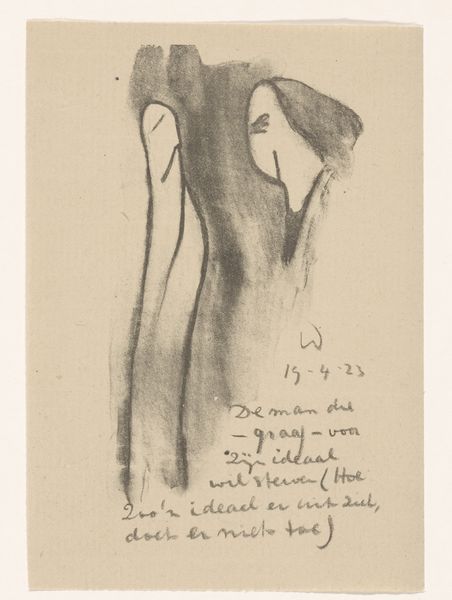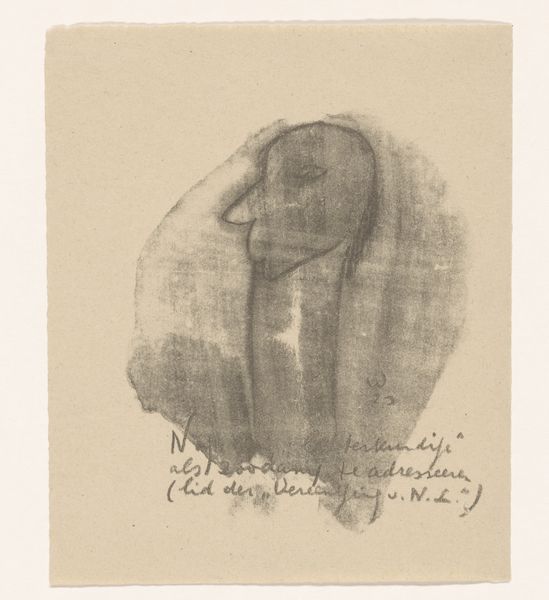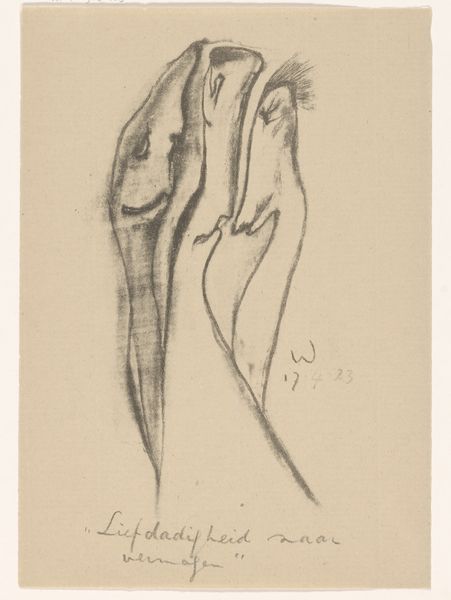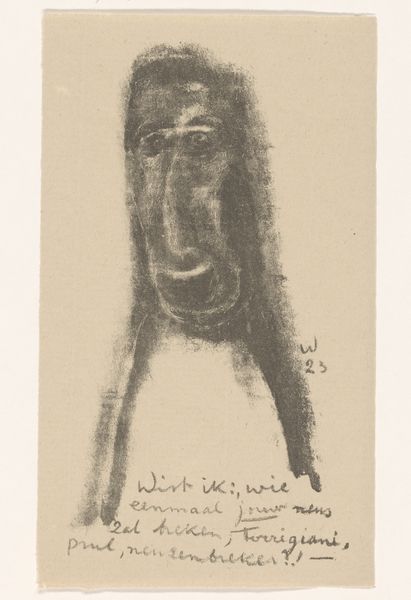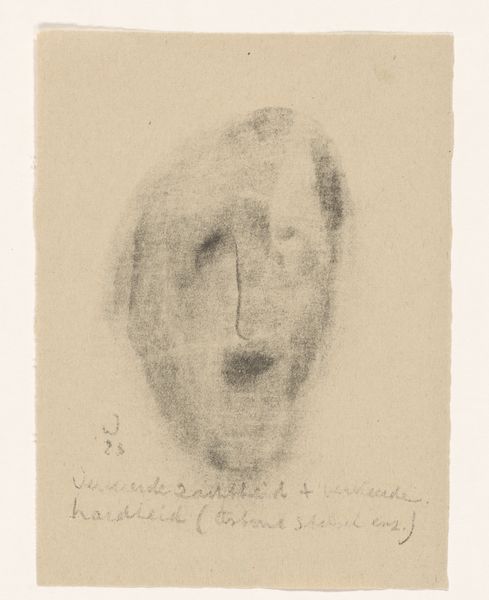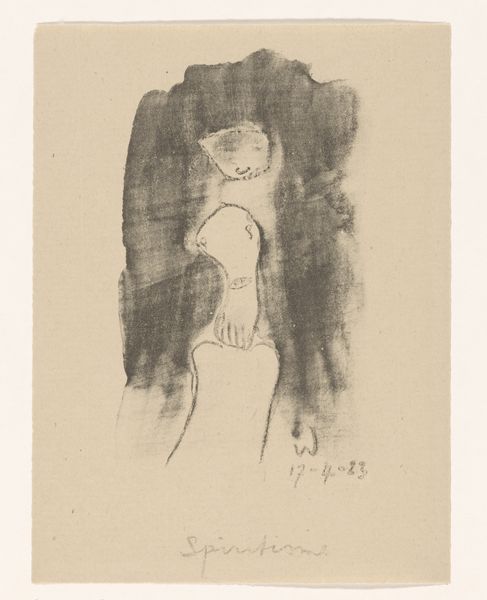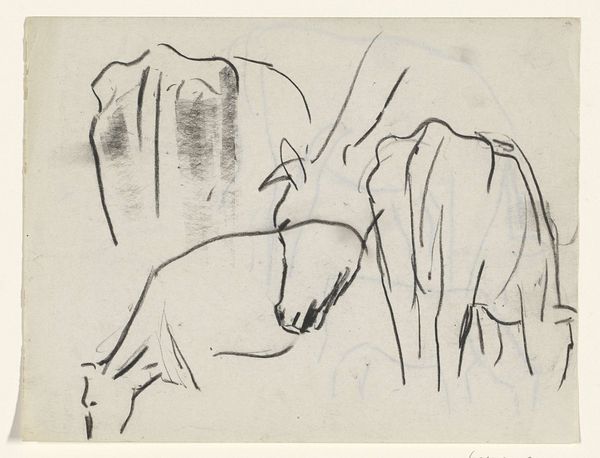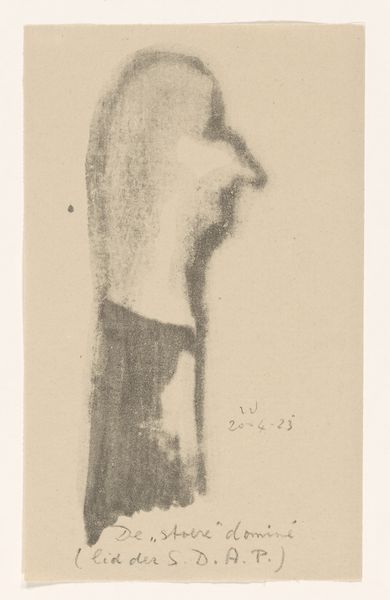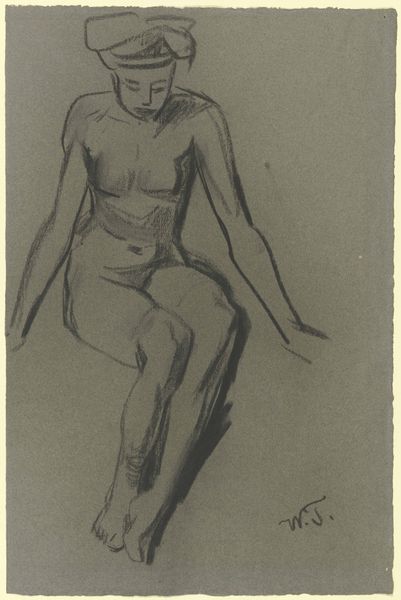
drawing, charcoal
#
portrait
#
drawing
#
figuration
#
expressionism
#
line
#
sketchbook drawing
#
charcoal
Dimensions: height 181 mm, width 128 mm
Copyright: Rijks Museum: Open Domain
Curator: Erich Wichmann's "Nachtelijke ontmoeting," or "Nightly Encounter," rendered in charcoal around 1923, presents a rather striking image. Editor: My first impression is somber. It has the quality of a ghostly memory, a half-formed thought drifting in from the edges of consciousness. The use of charcoal definitely enhances that feeling of ephemeral darkness. Curator: The choice of charcoal is indeed vital. Its powdery nature lends itself to the blurring and smudging we see, crucial in achieving the atmospheric quality. Note also how the line work, while present, is subdued, emphasizing the tonal range. Was the type of paper important too, you think? Editor: Absolutely, and this choice reflects, in my opinion, an underlying tension within Expressionism itself. Artists in Weimar-era Germany used sketch art for different things from just preparing large paintings, namely critique. This smoky effect allows him to hide the social interaction or subvert it. Curator: Hiding? I wouldn't go that far. It strikes me more as an investigation into the essence of form itself. Stripped of color, rendered in a readily available, inexpensive medium... it challenges the viewer to look beyond mere representation. Look at his sketch book drawings – are they complete artworks or sketches to more accomplished paintings? Editor: Well, I read it more in the context of social upheaval. There’s an implicit acknowledgement of the economic realities that defined artistic production. Perhaps that ambiguity *is* the point: neither fully resolved nor entirely abstract. We must understand it in the context of post-war artistic creation! Curator: An interesting take. But ultimately, Wichmann's method forces us to reckon with the physicality of image making. Charcoal isn't just pigment; it’s burnt matter, the residue of transformation. It speaks to the process of art, not only the final product. Editor: A transformation certainly mirrors personal and collective anxiety after World War One! That said, both the ethereal and material qualities contribute to its haunting power. Curator: Agreed. "Nightly Encounter" offers much more than a simple likeness; it offers insights into the act of creation itself, what its purpose may be for. Editor: And I’d add, also the social, historical context that helped produce and define what its function meant at the time!
Comments
No comments
Be the first to comment and join the conversation on the ultimate creative platform.

